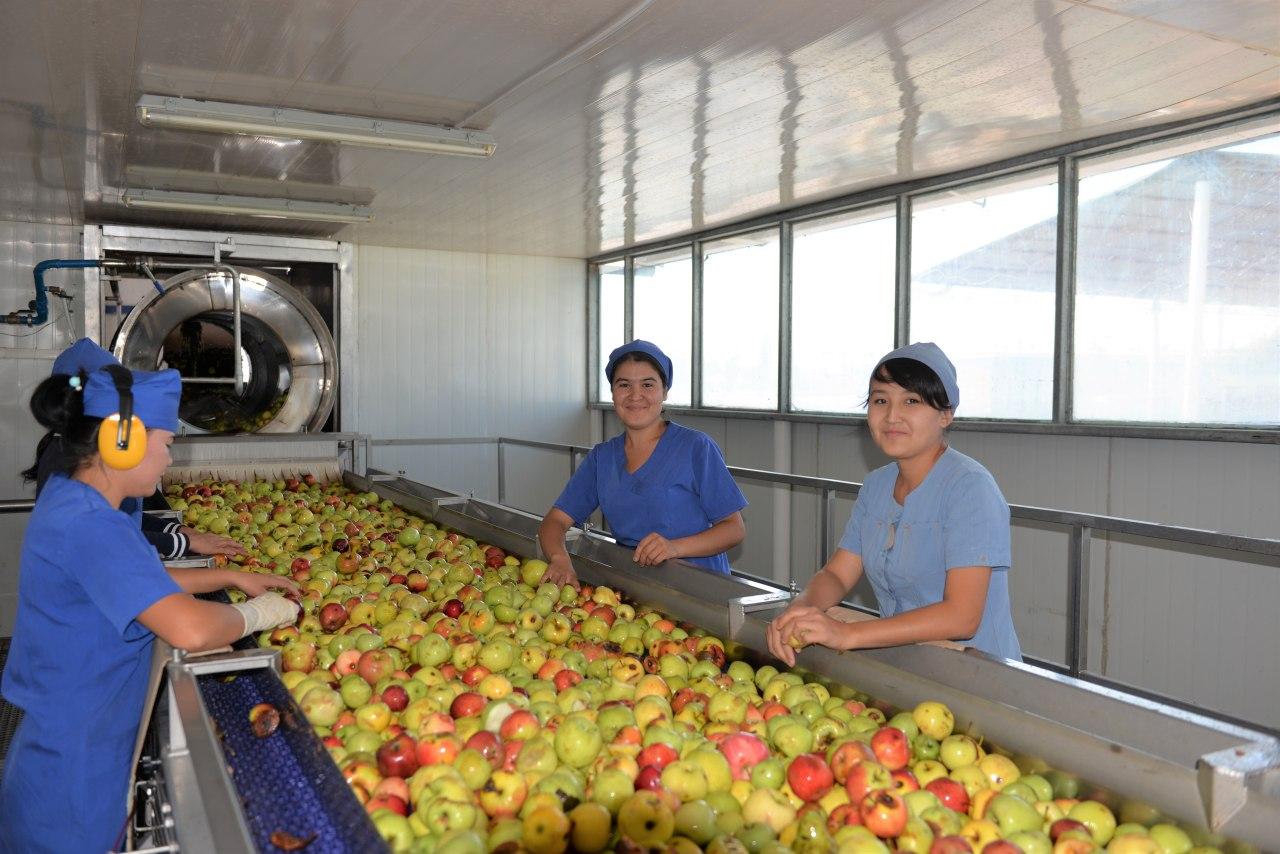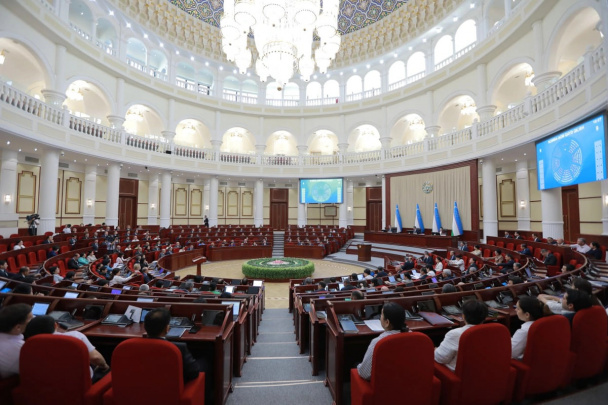How the agri-food sector can help in reducing unemployment and poverty in Uzbekistan? WB expert explains
In Uzbekistan, the agri-food sector, including agriculture, food and light industries (textile, garment, apparel, and leather industry), plays a vital role in the domestic economy. In 2019, it was the largest contributor to GDP (41 percent) and producer of export revenue (19 percent).

Today, agriculture alone generates 28 percent of GDP and employs more people than any other industry—27 percent of the entire labor force, or over 3.65 million people. Despite the severe implications of the COVID-19 pandemic, Uzbekistan’s agri-food sector remains an important driver of economic growth and export. It is projected to grow by 2.8% in 2020, compared with 0.6% growth in national GDP.
Yet it could be doing so much more to deliver on job generation than it has so far. It is estimated that by 2030, well-targeted public policies and investments could support the annual creation of 0.7–1.3 million new jobs in this sector, more than enough to absorb the 0.6 million young people who enter the country’s labor market annually.
The value of agricultural jobs goes beyond their number. Employment in this sector has a stronger effect on poverty and inequality reduction than it does in any other industry.
An estimated 9.6 percent of the country’s population (3.2 million people) were living below the $3.2/day poverty line in 2019, which is the international definition for lower-middle-income countries like Uzbekistan. Roughly 80 percent of them were living in rural areas with livelihoods that depend largely on agriculture. In 2020, due to the COVID-19 pandemic, poverty in Uzbekistan is projected to increase for the first time in over two decades.
Still, global empirical evidence shows that growth in agriculture leads to two-three times more poverty reduction than growth in any other sector, and the largest impact originates from employment. Thus, jobs in this sector have been found to be among the most poverty-reducing and inclusive, and Uzbekistan should be no exception. What, then, should be done to achieve these important goals?
Until recently, policy distortions and under-investment were significantly reducing potential employment growth in Uzbekistan’s agriculture sector. Under the state production system, farmers were required to engage in monoculture production of cotton or wheat, two of the least profitable and least labor-intensive crops. Productivity was limited by land allocations to specific crops without full consideration of local growing conditions.
Moreover, Uzbekistan has generally lagged behind in farmers’ ability to access accurate and up-to-date information on markets, weather, technologies, and farming practices, including through extension services. The country also does not promote the availability of high-quality seeds that are tailored to various agro-ecologies and resilient to climate change—and are generated by local agricultural research institutions—or the use of modern machinery and equipment.
All of these constraints have depressed incentives for greater investments and efficiency increases in agriculture, thereby reducing the demand for labor in the sector. But these gaps have also created an opportunity for quick wins in Uzbekistan, once more favorable policies, the kind that many other countries have long supported, are put in place.
Since 2017, the government has been implementing bold economic reforms that have begun to create conditions that could turn the agri-food sector into an engine of much higher and better-quality employment.
Going forward, Uzbekistan should capitalize on these and other reforms in the state’s order system and land use, and also on its comparative advantages in labor-intensive and competitive horticulture production, which is hard to mechanize, and the wider adoption of modern technologies.
Agriculture’s potential to generate more good jobs in Uzbekistan could be realized by: (i) shifting land to more labor-intensive crops that also yield higher land productivity and better market outlooks; (ii) increasing the extent of secondary cropping; (iii) prioritizing commodities with a lower probability of mechanization/automation; and (iv) adopting technologies that would not only increase farm incomes but also require more labor, as well as the implementation of international standards of good agricultural practice (Global GAP). Here are several examples of the potential for an increase in agricultural jobs by 2030:
• With other factors kept constant, a farmland shift from cotton and wheat (from 67 percent in 2019 to 45 percent in 2030) to more labor-intensive horticulture could create 26 percent more jobs in agriculture by 2030— or, put another way, require an additional 915,000 workers. Most of the jobs would be in the production of vegetables, fruits and berries, potatoes, and grapes.
• If mechanization is taken into consideration, the employment growth by 2030 would be slightly lower, increasing by 19 percent, or 677,000 jobs, compared to 2019. Harvesting and other tasks involved in the production of grains, cotton, and potatoes could become more mechanized even as the production of other crops remains essentially unchanged.
• More agricultural employment can also be generated by adopting modern technologies in fruit and vegetable production. Intensive orchards and greenhouses can create many jobs. For the 2030 job forecast, if 10 percent of the vegetable growing area were put under greenhouses or other intensive production methods, as well as 40 percent of orchards, these steps alone would generate 5 percent—or 155,000—more jobs by 2030. Overall, compared to 2019, total employment could increase by 24 percent, or 832,000 jobs.
More productive agriculture and the increased production of raw materials will enhance job creation in the food and textile industries that Uzbekistan has been underutilizing. For instance, in 2019, food processing, beverages, and tobacco (food industry) employed only 107,000 workers, or 2.6 percent of agri-food jobs. The textile, garment, apparel, and leather industry (light industry) currently employs 214,000 workers, or 5.1 percent of jobs in the sector.
By 2030, roughly 640,000 more workers could be employed in food and light manufacturing, with most of the new jobs in fruit and vegetable processing, meat processing, dairy, feed production, and finished textile and wear apparel.
Many of these jobs would be accessible to women, particularly those who live in rural areas and small towns and who otherwise would not likely have access to many alternatives.
It is the private sector’s “duty” to create high-quality jobs, but the government has a role to play in helping it achieve this goal. In the context of Uzbekistan, the government’s role is to: (i) promote growth in the agri-food sector in response to consumer demand through public policies and investments; (ii) facilitate women’s inclusion in this process; and (iii) support the involvement of small dehkan farms and firms in agri-food supply chains.
Most of these actions have been already implemented under the government’s Strategy for Agriculture Development in Uzbekistan for 2020–2030. Now it is important to focus on the efficient implementation of activities listed in the Strategy, including research, information and advisory services, digitalization of agriculture, or small farmers support program. All these activities to be launched almost from the scratch.
In addition, more attention should be paid to the development of small and medium-sized cities which will ensure job creation in the agri-food sector in close proximity to rural areas. These measures will provide for the creation of more inclusive and sustainable jobs and reducing rural poverty.
Learn more about the prospects of employment and the necessary support of the government in the above-mentioned sector by reading the Uzbekistan Agri-Food Job Diagnostic Report that the World Bank has released recently.
Sergiy Zorya,
Lead Agricultural Economist at the World Bank Country Office for Uzbekistan
Related News

12:42 / 26.12.2025
Uzbekistan’s GDP tops $145bn in 2025, targets $240bn by 2030

12:29 / 26.12.2025
President Mirziyoyev approves Uzbekistan’s state budget for 2026

19:35 / 25.12.2025
Hidden budget changes add UZS 41trn to Uzbekistan’s 2025 spending

12:38 / 24.12.2025



